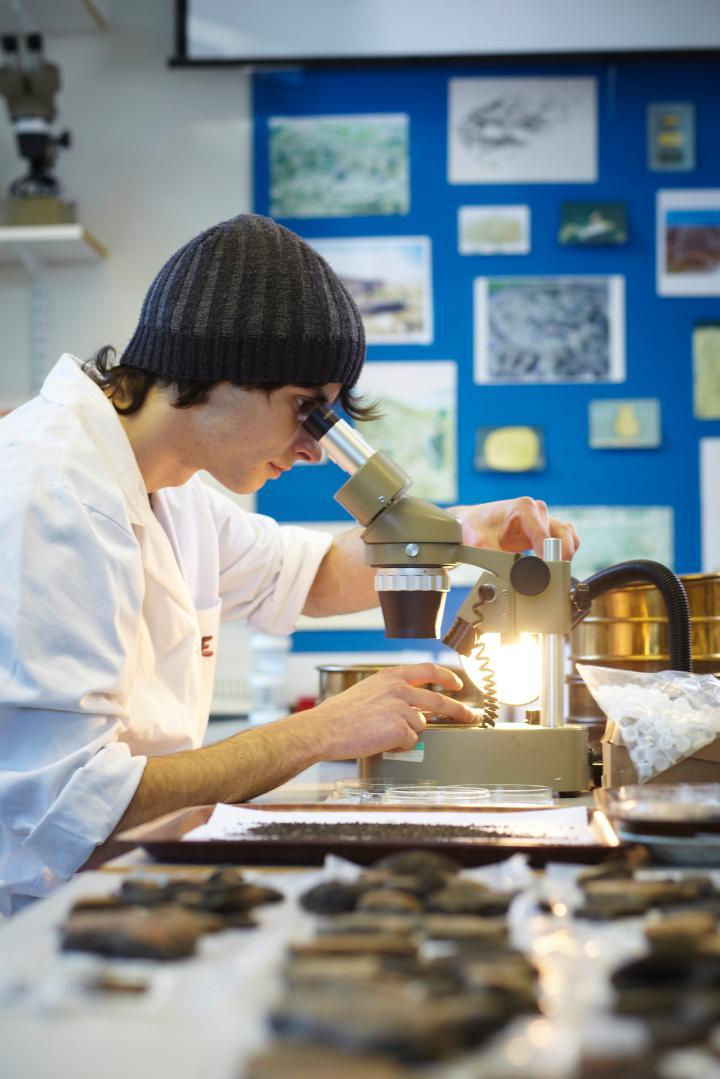Biological Anthropology Research Centre (BARC)
About the BARC
The Biological Anthropology Research Centre (BARC) is part of the School of Archaeological and Forensic Sciences, University of Bradford. The centre specialises in the analysis of human skeletal remains, both ancient and modern. All members of staff are active academic researchers and the centre also undertakes a wide range of contract work on behalf of various archaeological units, museums, and other organisations.
The BARC (formerly the Calvin Wells Laboratory) houses the second largest collection of human skeletal remains in an archaeology department in the UK. This includes material dating from the Neolithic to the 19th century. While most of the collection derives from cemeteries excavated in the UK, a small amount of material comes from overseas excavations. Much of the material currently housed at the BARC is on temporary or long-term loan from museums and archaeological units throughout the UK.
We are located in the Faculty of Life Sciences Integrated Life Sciences Learning Centre which contains state-of-the-art laboratories and world class teaching facilities. The BARC consists of the Keith Manchester laboratory (for teaching osteology and palaeopathology), the Don Ortner Laboratory (for osteological; and palaeopathological research), an osteology workroom (study space for students), a histology lab, bone store, and radiography lab.
Further Information on:
- BARC collections
- projects
- access for researchers
- Dr Jo Buckberry
- Dr Hannah Koon
- Dr Shirley Curtis-Summers
- Dr Andrew Wilson

The BARC Collections
The collections of human remains curated by the BARC are large, varied, and cover a considerable time span from the Neolithic to the 19th century. It is the largest collection of human skeletal remains used for teaching in the UK. Most of our collections come from England, and were excavated by different field units or research projects as a result of the planning process.
You can find further details below.
Prehistoric
Wetwang Slack, East Yorkshire (Bronze Age and Iron Age, c.450 individuals)*
- Barton-under-Needwood (Bronze Age cremations)
* On loan from the Hull and East Riding Museum
Roman
Baldock (California Cemetery), Hertfordshire (139 individuals)
- Kingsholm, Gloucester (51 individuals)**
- Gambier Parry Lodge, Gloucester (223 individuals)**
- Various other smaller Roman sites from around Gloucester**
- Piccadilly, York (9 individuals)
- Odiham, Hampshire (5 individuals)
** On loan from Gloucester City Council Heritage and Museums Service
Anglo-Saxon
Eccles, Kent (7th century and later, 171 individuals)
- Raunds, Northamptonshire (10th to 11th centuries, 357 individuals)
- Sancton, East Yorkshire (5th to 6th centuries, 23 cremations)*
- Crayke, North Yorkshire (9th to 10th centuries, 21 individuals)
* On loan from the Hull and East Riding Museum
Medieval
St. James and St. Mary Magdalene, Chichester, West Sussex (leprosarium and alms house, early 12th to 17th century, 374 individuals)***
- St. Giles, Brough, North Yorkshire (rural hospital, 92 individuals)
- Blackfriars, Gloucester (Dominican Friary, 1246 to 1539 AD, 127 individuals)**
- Hereford Cathedral (lay cemetery including, two large plague pits, Late Saxon to Medieval, c.1200 individuals)
- Box Lane, Pontefract (lay cemetery, 88 individuals)
- Towton (mass grave related to the Battle of Towton, 1461 AD, 47 individuals)
** On loan from Gloucester City Council Heritage and Museums Service
*** On loan from The Novium (formerly Chichester District Museum)
Post Medieval
New Bunhill Fields, Southwark, London (urban 19th century, 514 individuals)****
- St Peter's Wolverhampton (urban, 19th century, 150 individuals)
- Hickleton, South Yorkshire (rural, medieval and post medieval, 28 individuals)
- Helmsley, North Yorkshire (rural Quaker cemetery, 19th century, 7 individuals)
- Tanyard, Bromyard, Herefordshire (urban, Quaker cemetery early 18th century, 11 individuals)
- Villiers Street, Sunderland (urban, 19th century, 364 individuals)†
**** On loan from MOLA
† This collection currently cannot be accessed for research
International collections
- Niah Caves, Sarawak, Malaysia (Neolithic, 56 individuals)
In addition, small numbers of skeletons or skeletal elements from many different archaeological sites are curated by the BARC. Most of these have interesting pathological conditions, and are used extensively in our teaching and research.
The skeletal collections held by the BARC are continuously added to with populations coming to the laboratory for research or for analysis on a contractual basis, many of which are returned to museums and archaeological contractors following analysis.
Collections access form
A form to complete to request access to the Biological Anthropology Research Centre (BARC) collection of human skeletal remains. Email this form to Jo Buckberry at j.buckberry@bradford.ac.uk.
If you require this information in an alternative format, please contact our team. You can also read our Website Accessibility Statement.
Collections access information
All applicants should read the information regarding access to the BARC collections, and in particular should ensure their application meets the criteria outlined in this document.
If you require this information in an alternative format, please contact our team. You can also read our Website Accessibility Statement.
Human remains policy
The BARC human remains policy was developed according to the recommendations of the Guidance for the Care of Human Remains in Museums published by the Department for Culture, Media and Sport (DCMS) in October 2005. Human remains policies from various institutions were also consulted.
If you require this information in an alternative format, please contact our team. You can also read our Website Accessibility Statement.
